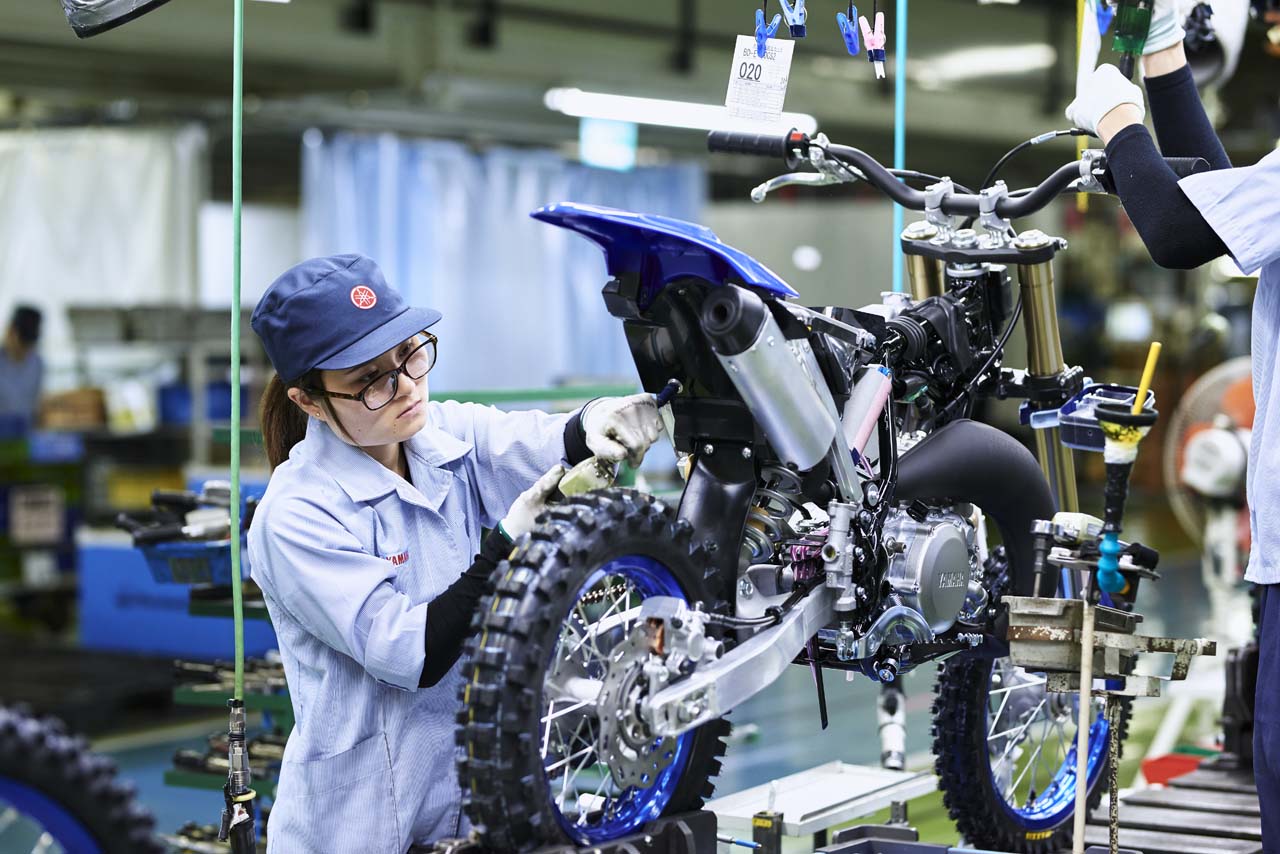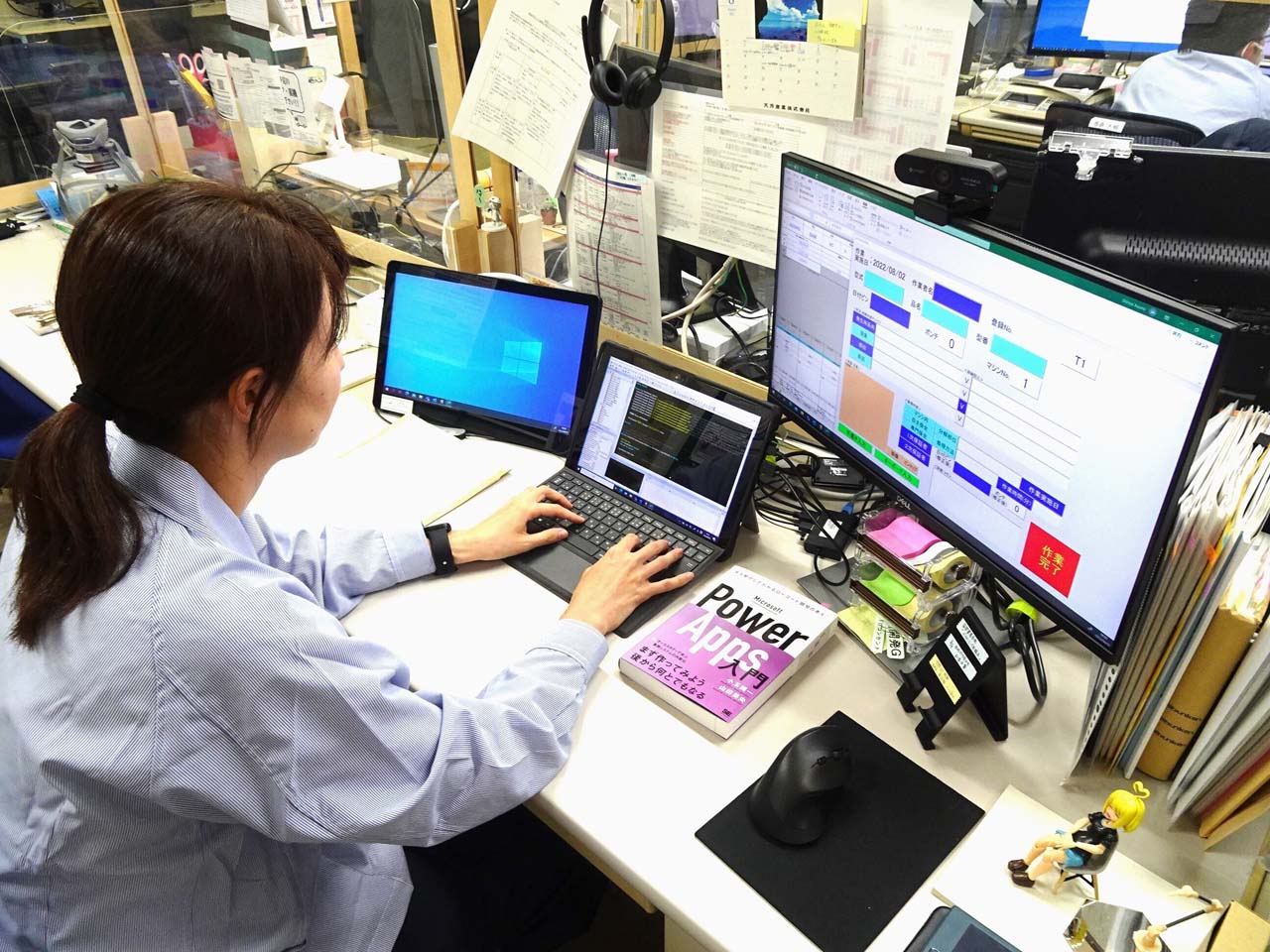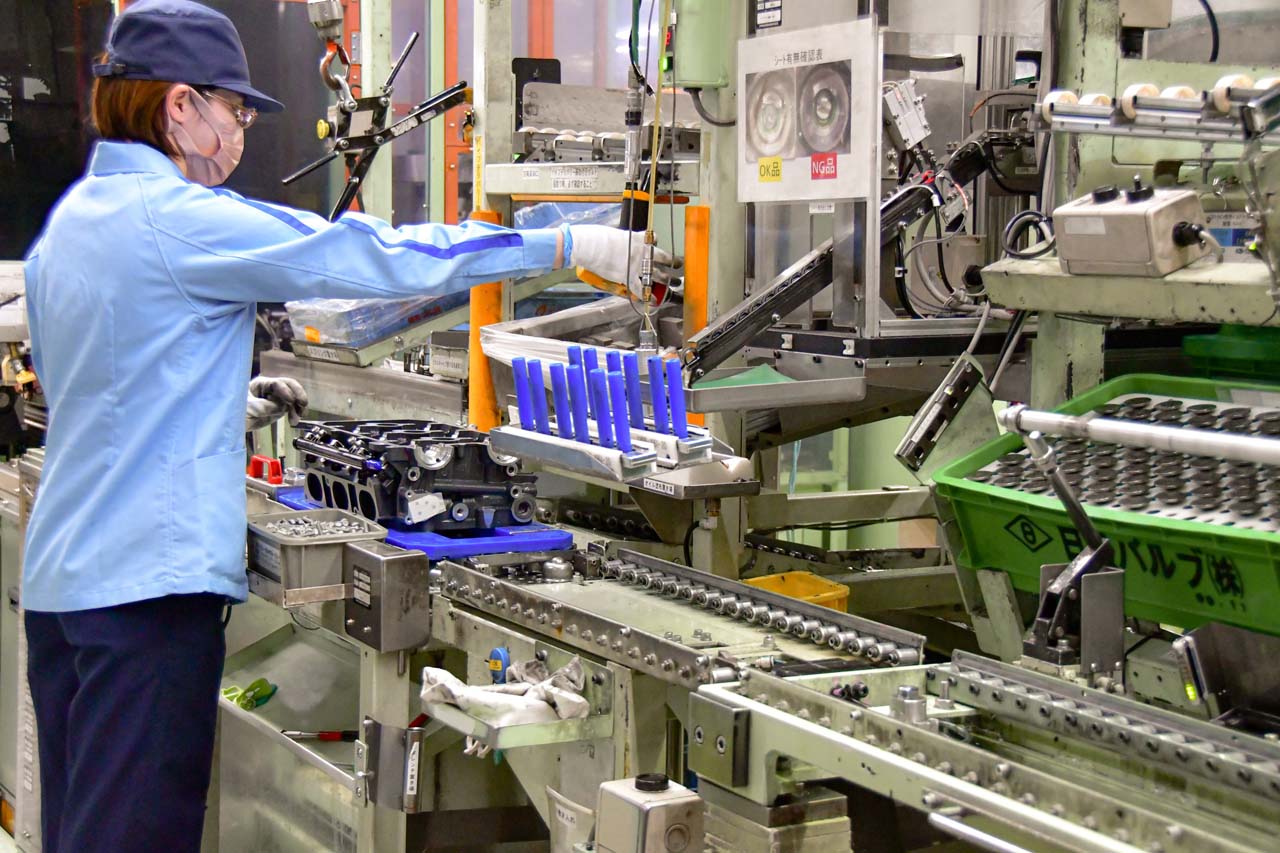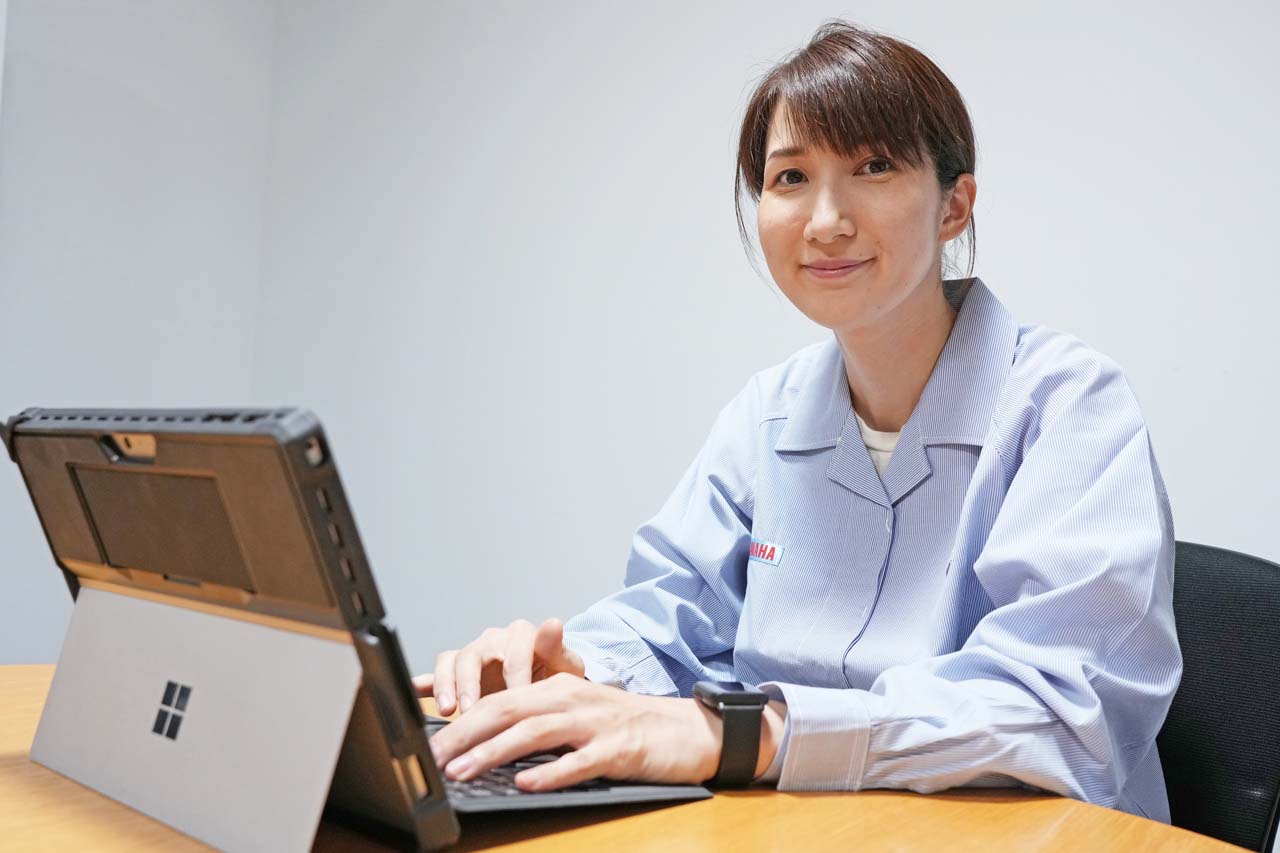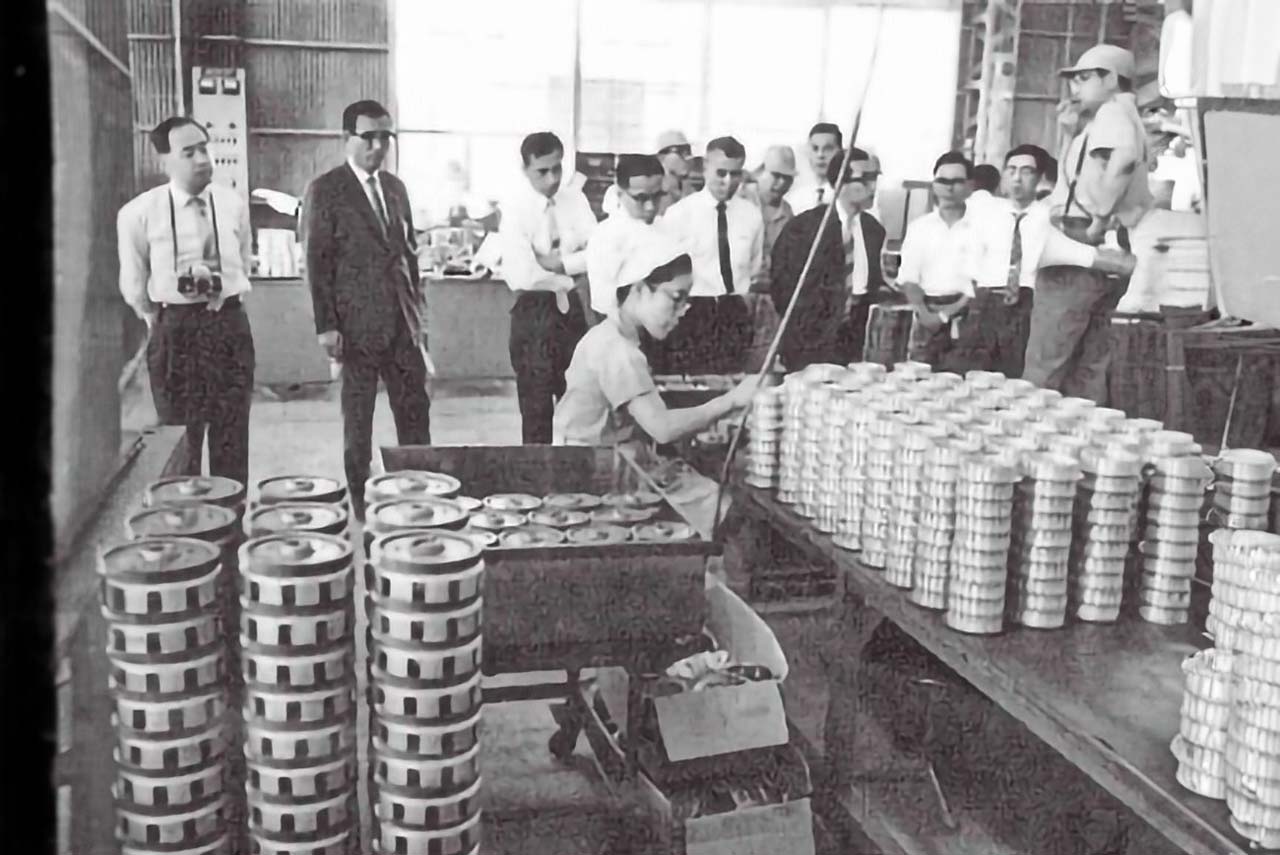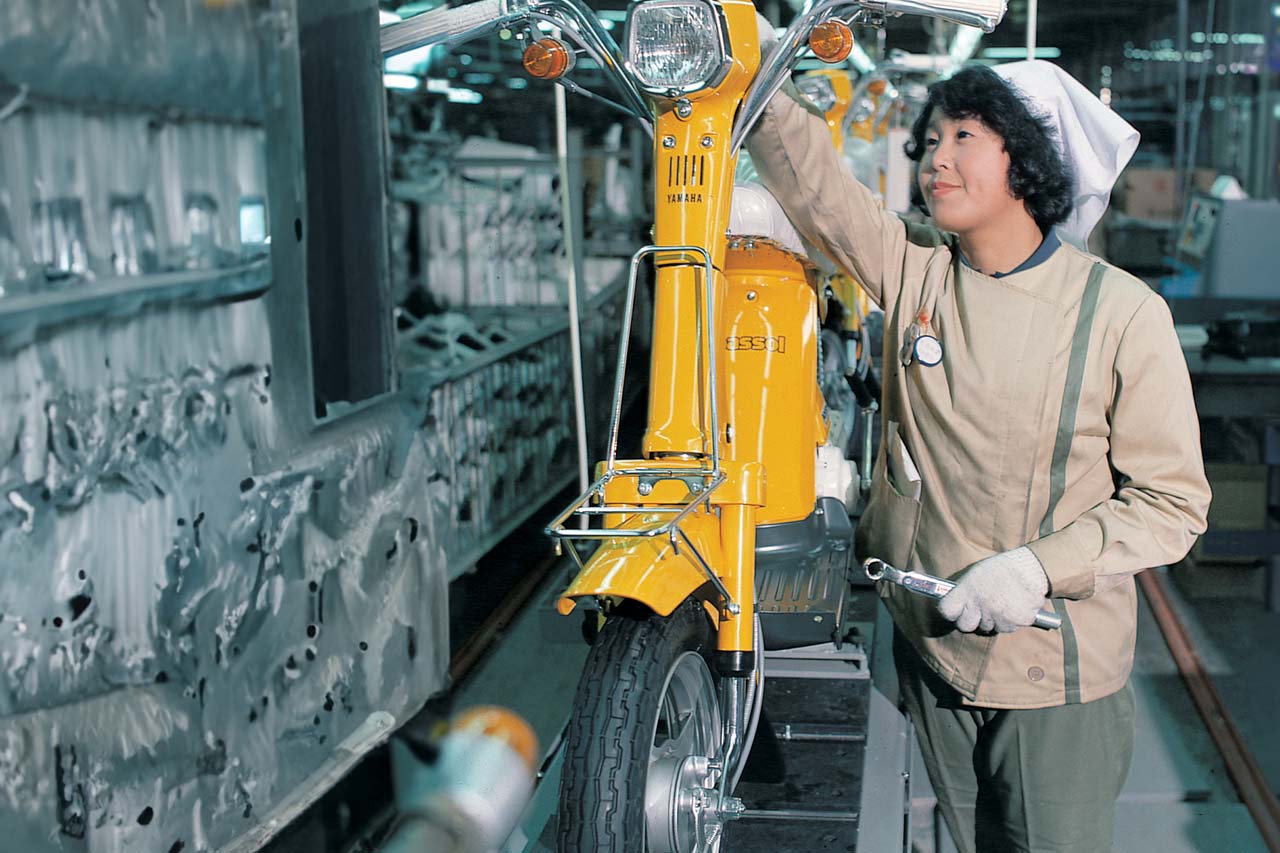ART for Human Possibilities
To achieve greater diversity and inclusion so that a cosmopolitan and driven workforce takes to their jobs daily, Yamaha Motor’s manufacturing and production sites are engaging in various efforts to create easier work environments.
As the industry rapidly changes, manufacturing sites are expected to respond accordingly. Moreover, the significance of women’s contributions through their unique perspectives and approaches to work is gaining momentum.
Yamaha Motor aims to be a company where a diverse workforce plays an active role. It has initiatives underway to bring greater diversity and inclusion to each workplace.
Kanoko Oishi - Improving Assembly Line Workflow
Kanoko Oishi works on an assembly line for outboard motor parts, and through collaborating with other women leaders in her workspace, she has been striving to improve their environment through ergonomics that quantify the loads placed on the body. “After two years of working on improvements, we’ve been able to really expand the range of duties that women and older operators can handle,” she says.
What formed the basis of the improvements made by Oishi and her colleagues was measuring the loads subjected to seven body parts that move when working on the line (neck, shoulders, waist, knees, elbows, wrists, and fingers) and evaluating them on a scale of 1 to 10. For example, when picking parts from a shelf, the load placed on the body is quantified, e.g., an elbow angle of 160° is 7, a neck angle of 35° is 7, and a wrist angle of 20° is 3. These values were closely examined and vetted, including the differences recorded between male and female operators when performing the same movements.
A total of 7,000 items were subject to evaluation for each line. In response to the issues that arose, detailed and well-thought-out improvements were implemented to facilitate easier reach by operators or opt for greater automation, such as altering shelf angles or rearranging jig placement. As a result, many women and seniors are now part of assembly processes that were previously only performed by men in the prime of their careers.
Over the past few years, the globe-spanning pandemic and resulting disruption of supply chains have required production sites to adapt to drastic industry changes and constantly fluctuating situations. From that perspective, creating an environment where anyone can work effectively and complement each other’s capabilities is also connected to enhancing the greater adaptability of the workplace as a whole.

